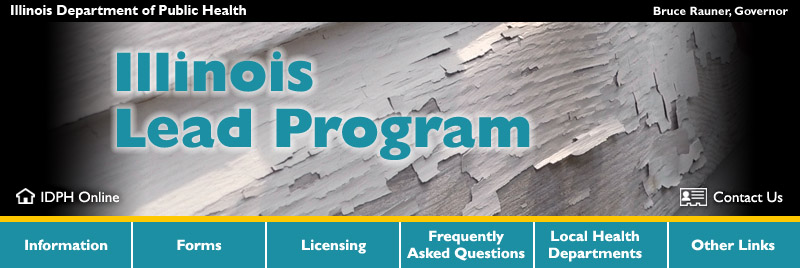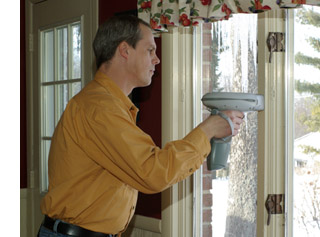
Illinois Lead Poisoning Prevention and the Healthy HomeLead poisoning, the No. 1 environmental illness of children, is caused primarily by lead-based paint in older homes. Illinois has higher rates of lead poisoning among its children than any other state in the nation. In 2009, approximately 4,000 Illinois children were identified with elevated blood lead levels. The most common exposure to lead by children is through the ingestion of paint chips and contaminated dust from deteriorated or disturbed lead-based paint in homes built before 1978. About 75 percent of Illinois homes built before 1978 contain some lead-based paint. The Illinois Lead Program’s goals and responsibilitiesThe primary objective of the Illinois Lead Program is to eliminate the incidence of childhood lead poisoning. Program funding is provided through a federal grant by The U.S. Centers for Disease Control and Prevention. The program conducts management responsibilities, nursing consultations, education, compiling data, and licensing lead professionals. The role of lead prevention and intervention activities are delegated to local health departments and health districts that provide services under a grant agreement. The goal of the Illinois Lead Program is to provide assistance for case management services, education and outreach through training and community interventions. Also, the program compiles data and produces surveillance reports for program evaluation. The program partners with numerous agencies and organizations throughout the state whose common interest is to alleviate lead exposure and assist in promoting a healthy environment. A diverse 50 member team, the Illinois Lead Poisoning Elimination Advisory Council, provides program guidance and oversight for carrying out the goals of the Strategic Plan for the Elimination of Childhood Lead Poisoning. The program’s responsibilities include four key prevention and intervention activities assisting families; Screening, Case Management, Education/Training, and Dwelling Inspections.
The Illinois Lead Program’s expansion to healthy homesThe home is where the family comes together to experience security, shelter and safety. Because we spend more than 50 percent of our lives indoors, it is important to make sure our families have a healthy home in which to live. Children are at a higher risk because they are still growing, discovering their environment and spending much of their time where many hazards exist. Some of the serious health problems children experience start from what families do or have in their homes. Good mental and physical health depends on homes that are well maintained and free of hazards. On the other hand, poorly maintained homes and homes containing health hazards, promote poorer quality health and risk of injury. The seven principles of healthy housing as defined by the National Center for Healthy Housing are:
Understanding, identifying and eliminating the dangers that may be in your home, may protect your family. To assist you in evaluating your home for hazards, the program has developed the following brochure, “Keeping Homes Healthy and Safe.” |
 Dwelling Inspections: The Illinois Department of Public Health’s Lead Program employs regional and local health department staff to inspect the dwellings of children who exhibit elevated blood lead levels. Homes with hazardous lead-based paint conditions are required to have the paint or the component that is coated with lead-based paint removed. The Department’s Lead Program licenses
Dwelling Inspections: The Illinois Department of Public Health’s Lead Program employs regional and local health department staff to inspect the dwellings of children who exhibit elevated blood lead levels. Homes with hazardous lead-based paint conditions are required to have the paint or the component that is coated with lead-based paint removed. The Department’s Lead Program licenses